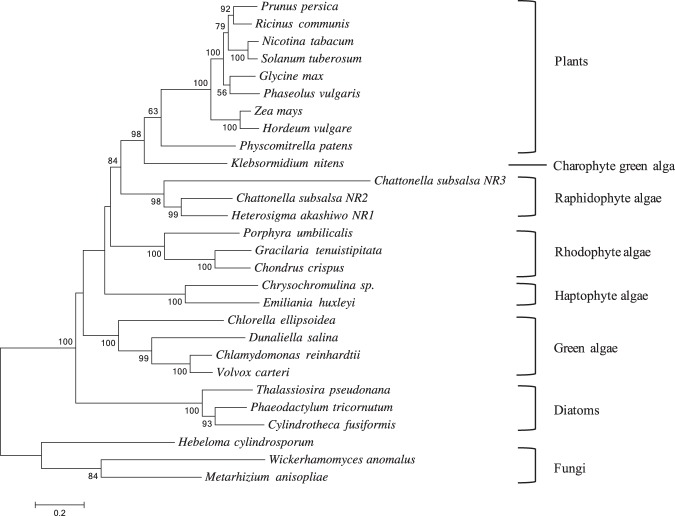Figure 3.
Molecular phylogenetic analysis of NR amino acid sequences in plants and algae. The tree was generated using the Maximum Likelihood method based on the Le Gascuel 2008 model76. The percentage of trees in which the associated taxa clustered together is shown next to the branches. Initial tree(s) for the heuristic search were obtained automatically by applying Neighbor-Join and BioNJ algorithms to a matrix of pairwise distances estimated using a JTT model, and then selecting the topology with superior log likelihood value. A discrete Gamma distribution was used to model evolutionary rate differences among sites (+G) and allowed for some sites to be evolutionarily invariable (+I). The tree is drawn to scale, with branch lengths measured in the number of substitutions per site. All positions containing gaps and missing data were eliminated. There were a total of 568 positions in the final dataset. Evolutionary analyses were conducted in MEGA772. The tree was rooted by fungal NRs from Wickerhamomyces anomalus, Hebeloma cylindrosporum, and Metarhizium anisopliae. Bootstrap values less than 50 are not shown.

